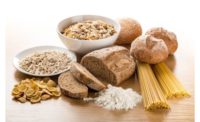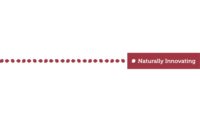Limagrain Ingredients has launched a European consumer observatory with the CREDOC (Centre de Recherche pour l’Etude et l’Observation des Conditions de vie).
Renewed every three years, this observatory will provide a comprehensive and regularly updated overview of the situation in the different countries by studying consumers’ knowledge, perception, and attitude towards fiber.
For a better understanding of the fiber gap in Europe
Nearly 90% of French adults and the same is true in other European countries, do not reach the recommended levels of dietary fiber intake (INCA3 survey).
The reasons for this low consumption are not well known. Limagrain Ingredients has therefore undertaken a consumer-oriented survey to get better knowledge, enabling to act more effectively to increase the consumption of dietary fiber.
For this purpose, Limagrain Ingredients has chosen to set up a "European dietary fiber observatory" in partnership with Crédoc. It will be carried out in two phases:
- A qualitative phase in 3 countries—Italy, UK, and Germany—was conducted with 100 people via an online community, to help the construction of a robust quantitative questionnaire for the second phase.
- A quantitative phase in 7 geographical areas—France, UK, Germany, Italy, Spain, Netherlands, and Sweden—surveying 1000 individuals online in each area through a common questionnaire. This will provide concrete and useful insights for future developments and actions around fiber.
Returns on the qualitative phase
The qualitative phase of our consumer observatory in partnership with Credoc has been carried out in June 2021, and has revealed several relevant insights:
- Respondents have a basic knowledge of fiber which is not including specific awareness of different fiber types:
- Broadly speaking, fiber is spontaneously associated with wholegrains—oats, barley, wheat, bran, spelt—but also with vegetables (legumes and potatoes) and to a lesser extend fruits such as oranges or nuts.
- Bran is most widely the best-known dietary fiber type: 88% of Italians, 61% of Germans, and 76% of British mentioned bran, against respectively 24% of Italians, 16% of Germans, and 23% of British for resistant starch.
- The health benefits of fiber are fairly well known to those surveyed:
- Improvement of digestion and intestinal transit is mentioned in priority
- Other benefits such as better control of blood sugar level and the positive impact of fiber on cholesterol and cardiovascular health are acknowledged at a lower level.
- Many levers exist and deserve more interest to increase fiber consumption:
- Better information on fiber, and particularly on their health benefits.
- A wider and more easily accessible product range.
- A clear label that products have a high fiber content
- The awareness and preference for products naturally rich in fiber.
The first stage of the observatory has identified that people who took time to fully complete the questionnaire are nutritionally conscious. This helps to explain certain trends. These results are no less rich: they confirm the interest in the company's European awareness campaign on fiber.
To complete this first approach, the quantitative phase had been carried out at the end of 2021 and the first results will be published soon.





